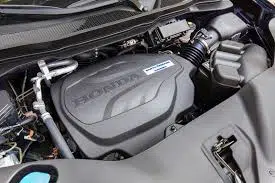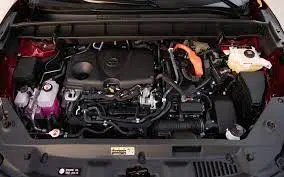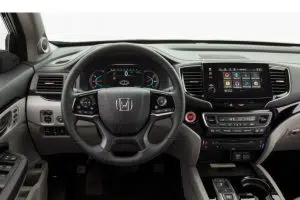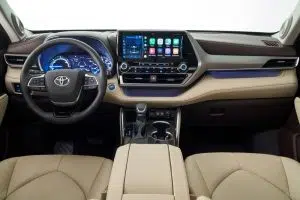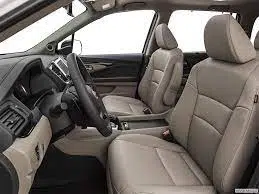Honda Pilot vs Toyota Highlander are two of the go-to crossovers in the car industry that you will have to grapple with as to which one is more durable, reliable, and delectable to the eyes. In terms of their technological designs and features, both automobiles are financially soothing and almost equal. However, we shall be looking at their differences and similarities in this article.
Contents
Honda Pilot vs Toyota Highlander.
Below are the outline of the some of the features that distinguish both cars from each other:
1. Powertrain
In Honda Pilot vs Toyota Highlander, both SUVs have similar powertrains: V6 engines with marginally different outputs. The Toyota does make more power but is also heavier. Both engines are also reliable and almost identical in fuel economy as well. The Honda does offer a nine-speed ‘box compared to the eight-speed in the Toyota. So calling one better than the other would be tough. Unless you want a hybrid, then the Highlander will be your only choice between the two.
Honda Pilot
The Honda Pilot, like the Highlander, is an SUV that many people swear by. And just like the Highlander, the Pilot is powered by a 3.5-liter V6 too. But this motor makes 280 hp compared to the Highlander’s 295 hp. The torque figure however, at 262 lb-ft, is almost identical to its chief rival and on most days torque is all that matters.
Honda simplified the transmission choices for the 2021 model year. Gone is the six-speed auto found in lower trims; now, it’s a nine-speed across the board. Just like the Highlander, buyers have the choice of either front- or all-wheel drive, though top trims like the Elite and Black Edition stick to the latter only.
Toyota Highlander
Toyota recently rid the Highlander lineup of the 2.7-liter four-pot. So now, the 3.5-liter V6 is the only pure petrol option available on the SUV. A 2.5-liter engine is also available but that is a part of the hybrid powertrain only. The V6 produces 295 hp and 263 lb-ft of torque whereas the Highlander Hybrid makes 243 hp of combined power and an undisclosed amount of torque. The V6 comes with an eight-speed gearbox, and the SUV is available in both front- and all-wheel drive flavors. The Hybrid comes with an E-CVT gearbox. Both engine options are available with front- or all-wheel drive.
2. Internal Designs and Structure
In the context of Honda Pilot vs Toyota Highlander, the Highlander has a distinct advantage over the Pilot as it offers a 12.3-inch infotainment system compared to the Honda’s 8.0-inch system. In addition, the Highlander also offers an 8.0-inch infotainment system as standard along with the three-zone climate control. However, if keeping the rear bench entertained is one of your primary concerns, rear entertainment screen is only available on the Pilot.
Honda Pilot
The Honda Pilot is a very well-equipped SUV as well. It might only have an 8.0-inch touchscreen system but it is available EX trim onwards. It gets Apple CarPlay and Android Auto as standard along with SiriusXM, Honda Link and Cabin Remote compatibility. The Satellite linked navigation system is a part of the Elite, Touring and Black Edition trims only. The top three trims also get the 10.2-inch advanced rear entertainment system with BluRay compatibility and built-in streaming apps, something that is not available on the Highlander. Unlike the Highlander however, the climate control system is available from the EX trim onwards.
The Honda comes with its own set of standard safety features called Honda Sensing. The package is identical to the one on the Highlander, with the blindspot monitoring being available from the second trim onwards while everything else like adaptive cruise control, lane keeping assist and collision prevention is standard. The Pilot also offers rear captain chairs on the top three trims with the Elite and the Black Edition equipped with heated/leather captain chairs.
Toyota Highlander
Since the Highlander is the newer car of the two you would expect it to be better specced, and you’d be right. Toyota offers the Highlander with a number of desirable features, chief among which has to be the (optional) 12.3-inch touchscreen infotainment system. It comes with Android Auto and Apple CarPlay and a three-month subscription to Sirius XM, Alexa capability and a full-fledged JBL surround sound system. The Highlander also offers a full leather upholstery with 10-way adjustable, heated and ventilated front seats and heated rear captain chairs. But there is a caveat. The 12.3-inch screen along with the 10-inch HUD is only available on the top-of-the-line Platinum trim. The bucket seats and leather upholstery are available in the Limited trim as well but the heated rear chairs are available in the Platinum trim only.
If you want something a little sportier, there’s the Highlander XSE, which joined the lineup for 2021. This big meanie features a more aggressive exterior treatment and available SofTex seats in bright red. It also comes with a “sport-tuned” suspension, though we found it pretty much the same as the regular Highlander. The XSE only comes with the V6.
The lower Highlander variants make do with an 8.0-inch touchscreen and fabric seats. However, Android Auto and Apple CarPlay are offered as standard across the board as is the three-zone climate control. In terms of safety, the Highlander comes with Toyota Safety Sense 2.0 as standard across the lineup. It features a collision mitigation system with pedestrian and cyclist detection, lane-keeping assist with steering control and the lot. Blind spot detection with cross-traffic, however, is available LE trim onwards.
3. Petrol Consumption
Here the Highlander is the clear winner when it comes to checking out Honda Pilot vs Toyota Highlander. Despite being the heavier of the two SUVs, it manages to return better mileage. In addition, the AWD versions are as frugal as the FWD versions of the Pilot. Then there is the clear advantage of the hybrid powertrain that trumps everything in frugality.
Honda Pilot
The FWD versions of the big Honda return 20, 27 and 23 mpg respectively for city, highway and overall. AWD powertrains with the nine-speed claims an efficiency figure of 19 and 26 mpg for city and highway and an overall figure of 22 mpg.
Toyota Highlander
The Highlander, despite being heavier than the Pilot returns a higher fuel economy. The FWD trims claim mpg figures of 21 in the city, 29 on the highway and an overall efficiency of 24 mpg. The fuel economy on the AWD trims suffers only slightly and stands at 20, 27 and 23 mpg for city, highway and overall respectively. Unsurprisingly, the hybrid version is best, returning 35 mpg in the city, highway and overall.
4. Cabin Space
The Highlander might offer lesser headroom compared to the Pilot but it is still ample to seat seven in comfort. It also features more legroom compared to the Pilot. But if you have kids and find that the third row is in regular use, then the Pilot is the better option here.
Honda Pilot
There is ample space in the Pilot even for the tallest of occupants. With 40.1 inches of headroom without the moonroof and 39.5 inches with it, it just shades the Highlander. Shoulder room at 62 inches in the first two rows is considerably more than the Highlander. The third row is wider also, by over two inches. Due to the slightly shorter wheelbase the legroom at 40.9 inches and 38.4 inches in the first two rows is lower compared to the Highlander, but the Pilot’s longer length shows its advantage in the third row as it offers over four inches of extra legroom compared to its competitor.
Toyota Highlander
Cabin space depends a lot on the exterior dimensions of a car. In this case, the Highlander is a couple of inches shorter in length, width and height compared to its competition which leads to a slightly tighter cabin, relatively speaking. All trims without the panoramic moonroof boast of a headroom of 39.6 inches in the first row, 39.4 inches in the second and 36.1 inches in the last row. The panoramic moonroof of the Platinum trim shaves off and inch and two inches from the first and second rows, respectively. Shoulder room is around 59 inches in the first and second rows; the third row is narrower with 55 inches. Despite being shorter, the Highlander does have a longer wheelbase of 112 inches compared to 111 inches on the Honda. This translates to slightly more legroom between the wheels but the third row suffers with just 27.7 inches of legroom due to the shorter length of the vehicle.
5. Price Tags
Honda Pilot
Honda offers the Pilot in seven different trims namely LX, EX, EX-L, Special Edition, Touring, Elite and Black Edition. The LX starts at $33,725 including destination and the top Black Edition costs $51,395. As of 2021 all models use the same nine-speed automatic transmission. In addition, AWD costs $2,000 extra which is a bit of a bummer. Also there is no hybrid on offer.
If you must have the Pilot and you can forego the panoramic roof, heated steering and heated second row, the Touring is the best option as it offers similar equipment as the higher models and yet is significantly cheaper. Plus, it is also available in seven- and eight-seater configurations.
Toyota Highlander
The Highlander starts at $35,985 for the base L trim (including destination) and goes all the way up to $48,140 for the FWD models. AWD costs around $1,600 on top of the listed price. The Highlander is available in six trims; the mid-point is the XLE trim which starts from $40,985 and the Limited trim starts at $44,940. The top Platinum trim with all bells and whistles starts at $48,140. This trim is fully specked and there are no extra packages available on the Platinum except for added accessories like floor mats, cargo nets etc. All you need to pick is how many wheels send power to the road.
The Highlander hybrid starts at $39,585 and tops out at $49,965. And as with the gasoline versions, AWD is $1,600 extra.
6. Load Capacity
Thanks to its larger size and hidden storage compartments, Honda Pilot is the more cavernous of the two and the ideal choice for a large family.
Honda Pilot
If the Highlander is big, the Pilot is bigger still. Plus, if anyone knows how to utilize cabin space it’s Honda, and its mid-size SUV is no exception. The pilot offers 16.5 cu-ft of cargo space behind the third row. Fold it down and the capacity increases to 46.8 cu-ft and with both rear rows down it can swallow 83.9 cu-ft worth of cargo. That’s not much you’d think but the Pilot also hides under floor cargo holds that considerably further increase the cargo capacity by as much as 25 cu ft. with the rear rows folded.
Toyota Highlander
The Highlander is a big car and its cargo capacity is nothing to scoff at. It offers 16.0 cu-ft of cargo capacity behind the third row. Fold the third row and the capacity increases to 48.4 cu-ft. With both the rear rows down, you can haul cargo worth 84.3 cu-ft.
